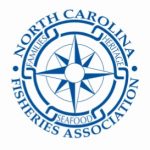Daily Archives: October 29, 2020

California crabbing rules a concern says North Coast fisherman
Local crab fisherman Mike Cunningham said he’s spoken with fishermen across the West Coast who take issue with the new rules. “We always look to avoid entanglements with whales,” Cunningham said. “The biggest problem (with the new rules) is that they are talking about closing massive areas to fishing. You could have an entanglement problem near Monterey, and the director (of Fish and Wildlife) could close the waters from Monterey up past Humboldt.” There are six fishing zones along the state’s coast. “The director now has the authority to do anything at any time,” Cunningham said. “Now, sometimes, it may just be a fleet advisory or warning, but it could go all the way to closing the entire coast to crab fishing.” The new rules stem from a lawsuit filed against the state by the Center for Biological Diversity, settled in 2019, >click to read< 19:48

A new current in the Nova Scotia lobster dispute – Local First Nation says Sipekne’katik did not consult them before launching
The ongoing dispute over Indigenous fishing rights in Nova Scotia has seen a new player emerge to add to the troubled waters. This time however, it might be seen as veiled criticism by one band of the actions of the other.,, The new player in the dispute is the local Bear River Mi’kmaw band who are actually the band closest to St Mary’s Bay in southwestern Nova Scotia. On the other hand, the Sipekne’katik who are at the heart of the dispute, are based over 250 km away in the central part of the province. >click to read< 14:30
Mi’kmaw band raises concerns about Sipekne’katik lobster fishery – In a letter sent to media and addressed to federal Fisheries Minister Bernadette Jordan, Sipekne’katik Chief Mike Sack and other Indigenous leaders, Bear River Chief Carol Dee Potter said her community has fished St. Marys Bay “since time immemorial,” but they’ve recently been disrupted. “Over the last few weeks, our fishers have been forced out of this area due to the ongoing dispute,” >click to read<

Supreme Court hears case in dispute over fisheries landings tax
Millions of dollars of fish landing taxes are at stake in a lawsuit now being deliberated by the Alaska Supreme Court,, The court heard oral arguments Oct. 21 in a lawsuit brought against the State of Alaska by Seattle-based Fishermen’s Finest Inc. in which the company argues Alaska’s fishery resource landing tax violates a prohibition on taxes or fees levied against goods on the way to export in the U.S. Constitution. Jim Torgerson, an attorney for Fishermen’s Finest, argued that the fish harvested and processed in federal waters by the company’s catcher-processor vessels have started their journey to foreign markets when it arrives at Alaska ports but before being shipped worldwide.>click to read<11:27

Before Fiberglas – British Columbia & Wahl Boatyard
In the early 1900’s with the pushing through of the Grand Trunk Pacific Railway from Edmonton to Prince Rupert, the Canadian government promoted land grants and settlements up the coast of British Columbia. Many Scandinavians took advantage of the opportunity and moved their families to Canada’s west coast. Fishing and logging were the staples of the economic engine at the time, and boats were needed for both as well as for transportation between coastal communities. Many of these settlers chose to build their own boats. In the early 1920’s, Ed Wahl moved his family from Norway and settled in Port Essington, a small community on the west coast situated due west of Edmonton and south of Prince Rupert, near the mouth of the Skeena River. photos, links, >click to read< 10:38

California Lobster season debuts amid changing seafood industry
It’s California spiny lobster season, from October through mid-March. Local fishermen and seafood retailers are celebrating its arrival, announcing the happy news that prices are the lowest in many years and the supply plentiful. What’s changed? In recent years, more than 95 percent of these well-loved California crustaceans were shipped to China, leaving only high-priced, limited quantities for local consumption. Rumors circulated that some fishermen were contemplating suspending operations, discouraged by their lost markets. Then, just as quickly, attitudes changed, as reality sank in. “People have to eat. If we don’t fish, what are people going to eat?” >click to read< 09:40

Moving Forward on Lobster Fishery Means Addressing Access and Conservation
In 1999, the Supreme Court’s Marshall decision recognized that Mi’kmaq First Nations have had, and continue to have, a treaty right to catch and sell fish. As a result, First Nations have been increasing their presence in the fishery over the past 20 years. Now, more than 20 years later, this remains a stumbling block, as new “moderate livelihood” Indigenous fisheries are emerging. Further, these new fisheries have another crucial angle – First Nations are developing their own fishery management and conservation plans, making this about Indigenous self-governance as well as about catching lobsters. Indeed, what we’re seeing unfolding off the coast of Nova Scotia touches on two themes that come up worldwide: who sets the rules for conservation of resources, and who has access to harvesting that resource. >click to read< 08:33














































